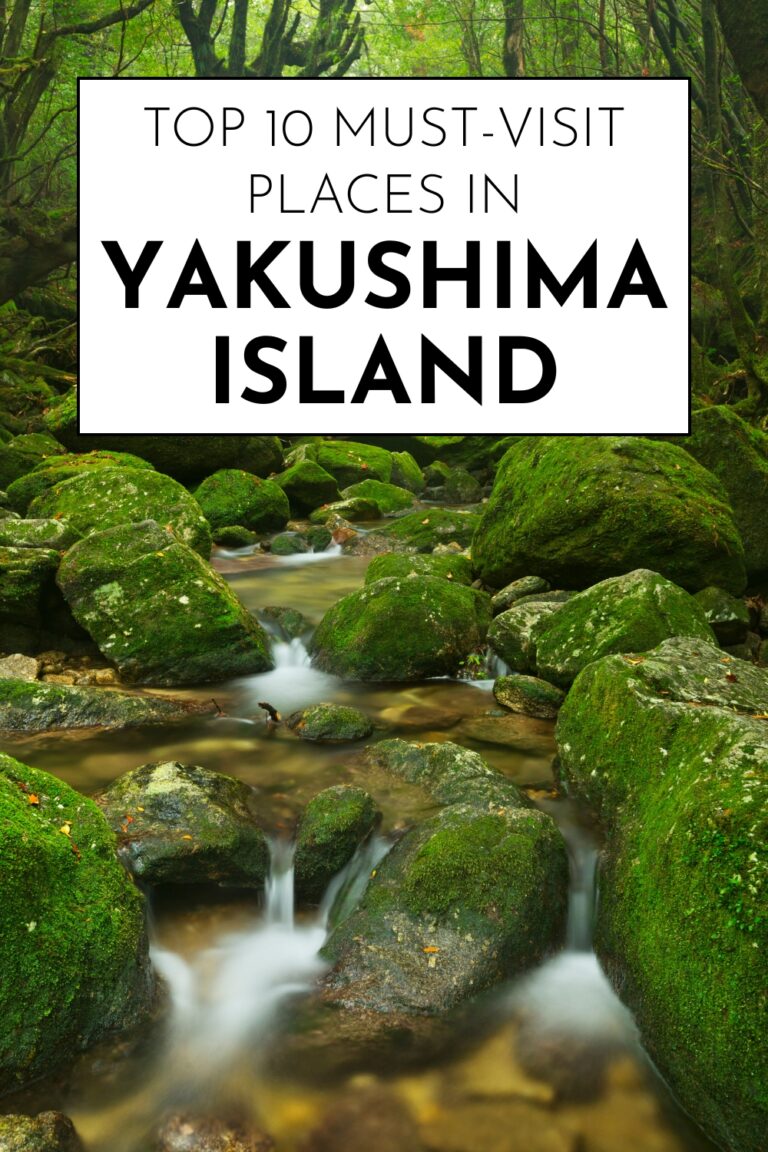Yakushima Island, a mystical UNESCO World Heritage site off the southern coast of Japan, offers visitors an otherworldly experience where ancient forests meet pristine beaches. This small island in Kagoshima Prefecture captivates travelers with its primeval cedar forests, crystal-clear rivers, and diverse ecosystems that inspired the magical landscapes of Studio Ghibli’s “Princess Mononoke.”
Known as the “Galapagos of the East,” Yakushima presents a unique ecosystem where subtropical beaches transition into temperate mountain forests within just a few kilometers. The island receives some of Japan’s heaviest rainfall, creating lush landscapes that support thousand-year-old cedar trees and rare wildlife found nowhere else on Earth.
From ancient forest giants that have stood for millennia to secluded hot springs hidden in mountain valleys, Yakushima offers adventures for nature lovers, spiritual seekers, and anyone looking to escape into Japan’s most pristine wilderness. The island’s compact size allows visitors to experience incredible biodiversity, from sea turtle nesting beaches to alpine vegetation, all within a single day’s journey.
Let’s explore the ten most spectacular destinations that make Yakushima an essential stop for anyone seeking Japan’s natural wonders.
1. Jomon Sugi – The Ancient Forest Giant
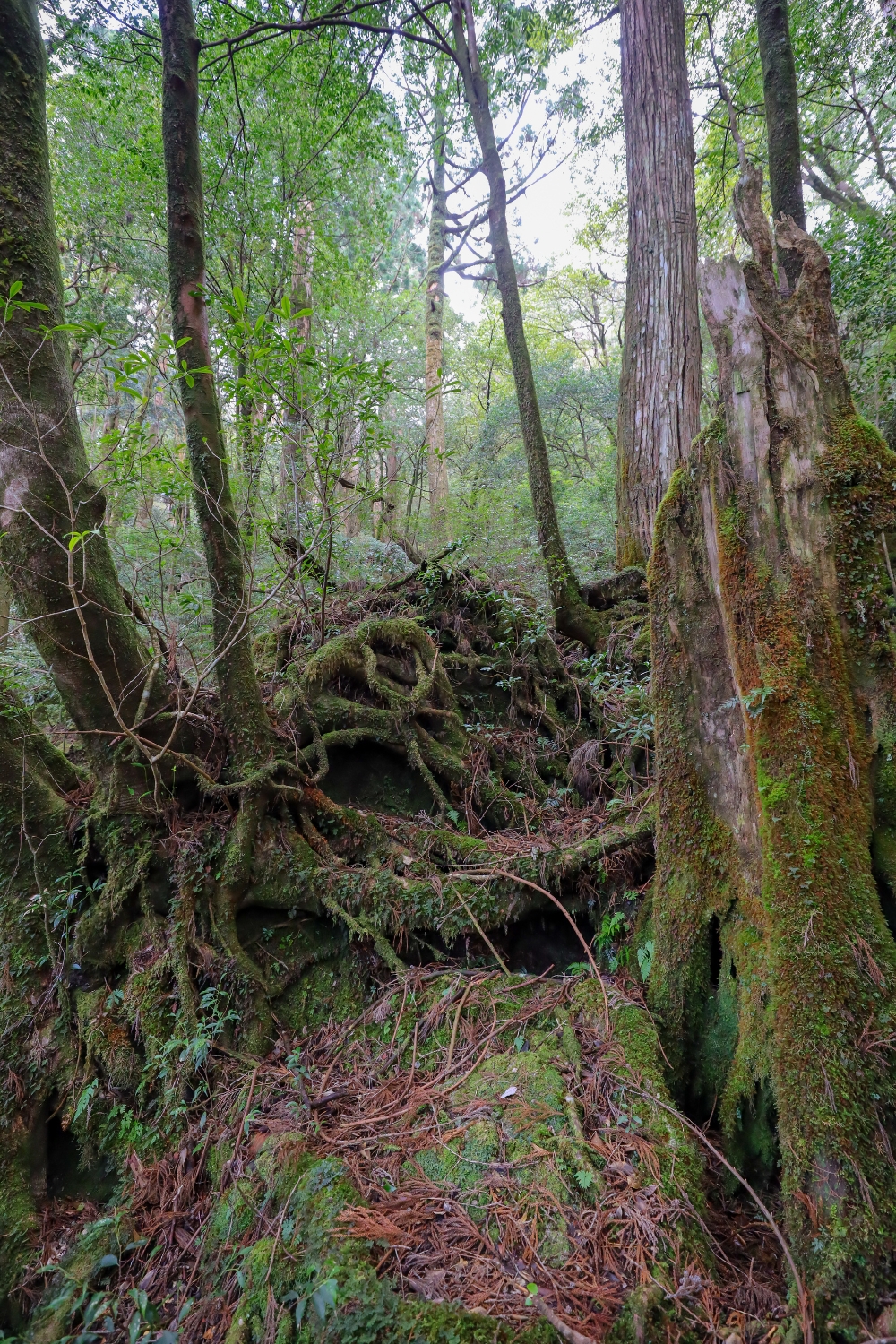
Deep within Yakushima’s primeval forest stands Jomon Sugi, Japan’s most famous ancient cedar tree and the island’s crown jewel. This magnificent giant, estimated to be between 2,170 and 7,200 years old, represents one of the oldest living trees on Earth and serves as the ultimate pilgrimage destination for nature enthusiasts.
Ancient Majesty and Natural Heritage
Jomon Sugi measures over 25 meters in height with a circumference of 16.4 meters, making it not only ancient but also one of Japan’s largest cedar trees. The tree’s name comes from the Jomon period (14,000-300 BCE), though scientists debate whether it actually dates back that far.
The trek to reach Jomon Sugi requires dedication and preparation. The 22-kilometer round trip takes 8-10 hours through diverse forest ecosystems, from lowland subtropical vegetation to highland temperate forests. Along the way, hikers encounter other ancient cedars, mountain streams, and the remnants of old logging railways.
The Sacred Journey
The trail to Jomon Sugi follows an old logging railway for the first 8.5 kilometers, creating a relatively flat but long approach. The final 2.5 kilometers involve steep mountain paths through increasingly ancient forest, where the atmosphere becomes almost spiritual.
Weather conditions can change rapidly, with frequent rain and mist adding to the mystical atmosphere. The forest’s ethereal beauty, enhanced by moss-covered rocks and filtered sunlight, creates an otherworldly experience that justifies the challenging journey.
Trail distance: 22 kilometers round trip
Duration: 8-10 hours
Difficulty: Challenging
Best time: April-November (winter requires special preparation)
2. Shiratani Unsuikyo Ravine – The Princess Mononoke Forest
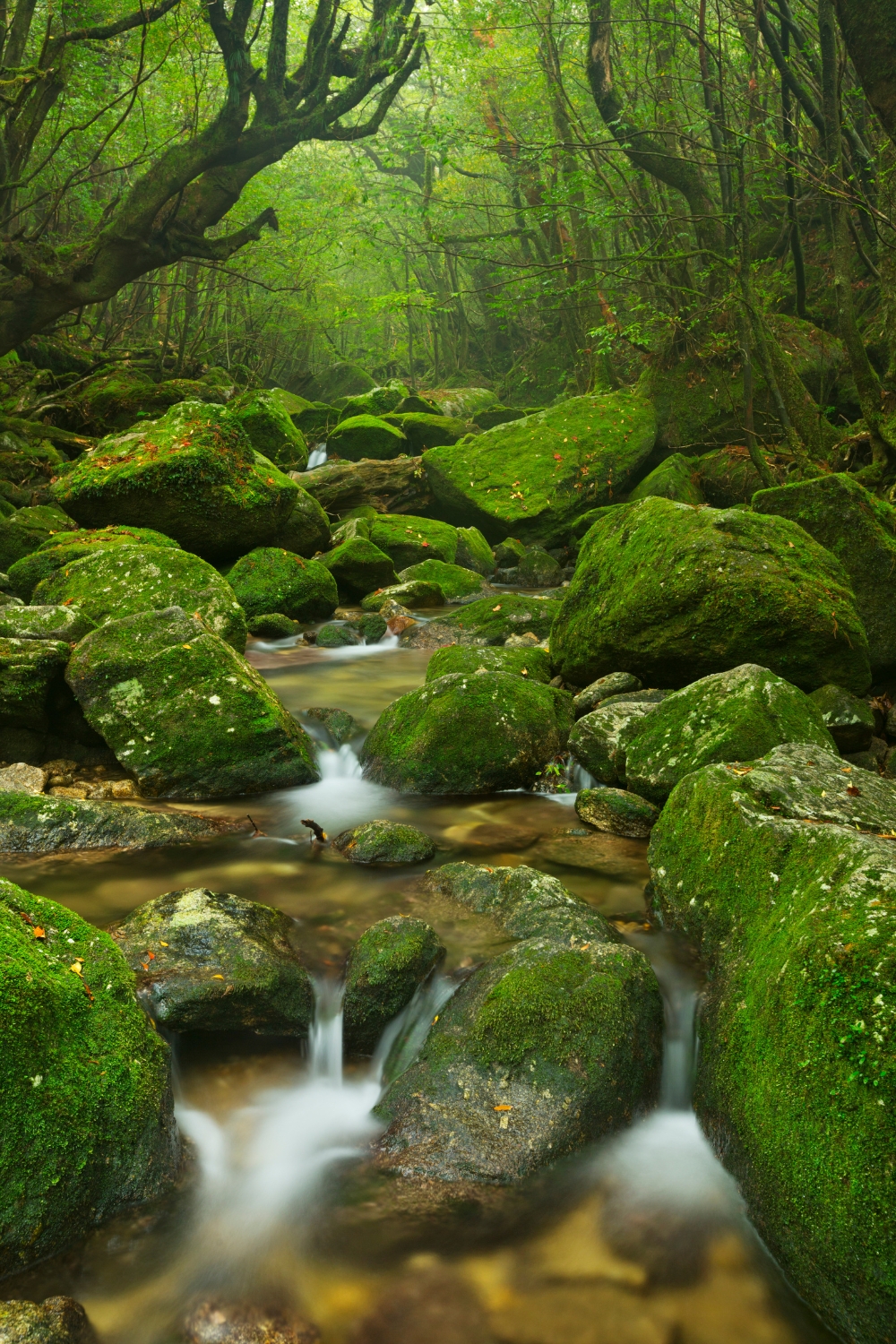
Shiratani Unsuikyo Ravine offers visitors the most accessible glimpse into Yakushima’s magical forest world. This moss-covered wonderland served as direct inspiration for the enchanted forest in Studio Ghibli’s “Princess Mononoke,” creating a real-life anime experience that captivates visitors of all ages.
Moss-Covered Wonderland
The ravine features multiple hiking trails that wind through ancient cedar forests draped in emerald moss. Every surface – from tree trunks to rocks to fallen logs – wears a thick carpet of moss that creates an almost supernatural green glow throughout the forest.
The most popular trail leads to the “Moss Forest” viewing platform, where visitors can observe the pristine ecosystem from a wooden deck. The 1-hour hike offers spectacular photo opportunities and encounters with ancient cedars without requiring the full-day commitment of the Jomon Sugi trek.
Multiple Trail Options
Three main trails offer different experiences and difficulty levels. The shortest trail (1 hour) leads to the moss forest, while longer options (3-4 hours) include visits to Taikoiwa Rock and additional ancient cedar groves.
The Wilson Stump, a massive hollow cedar trunk large enough for several people to stand inside, marks one of the trail’s most memorable stops. This 400-year-old stump demonstrates the incredible size of Yakushima’s ancient forest giants.
Trail options: 1-4 hours
Difficulty: Easy to moderate
Main attractions: Moss forest, Wilson Stump, ancient cedars
Princess Mononoke connection: Direct filming inspiration
3. Senpiro Falls – Cascading Natural Beauty
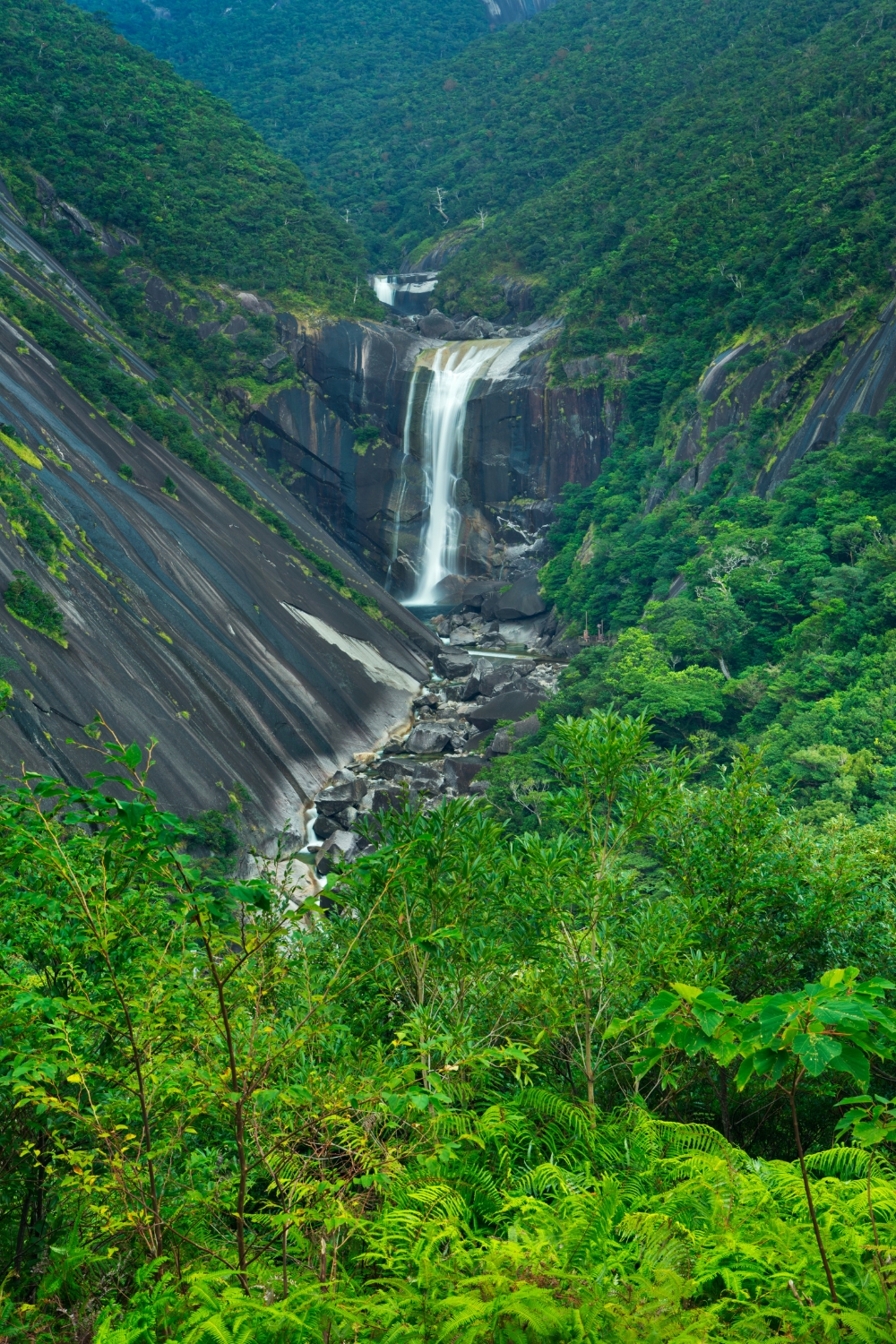
Senpiro Falls presents Yakushima’s most spectacular waterfall, where crystal-clear mountain water cascades 60 meters down granite cliffs into a pristine pool below. This accessible natural wonder offers the perfect introduction to Yakushima’s water-rich ecosystem and provides excellent swimming opportunities.
Multi-Tiered Waterfall System
The falls consist of multiple tiers, with the main drop creating a powerful curtain of water that generates cooling mist throughout the surrounding forest. The granite rock faces, polished smooth by centuries of flowing water, create natural slides and pools perfect for adventurous visitors.
The area around Senpiro Falls features several smaller cascades and crystal-clear pools where visitors can swim in refreshingly cool mountain water. The granite formations create natural seating areas and observation points for photography and relaxation.
Easy Access and Activities
Unlike many of Yakushima’s attractions, Senpiro Falls requires only a short 5-minute walk from the nearest parking area. This accessibility makes it perfect for families, older visitors, or anyone seeking natural beauty without strenuous hiking.
The falls area includes basic facilities and serves as a popular picnic spot for locals and tourists. Early morning visits offer the best lighting for photography and fewer crowds for swimming.
Access: 5-minute walk from parking
Activities: Swimming, photography, picnicking
Height: 60 meters
Best time: Year-round, early morning preferred
4. Oko Falls – Hidden Mountain Cascade
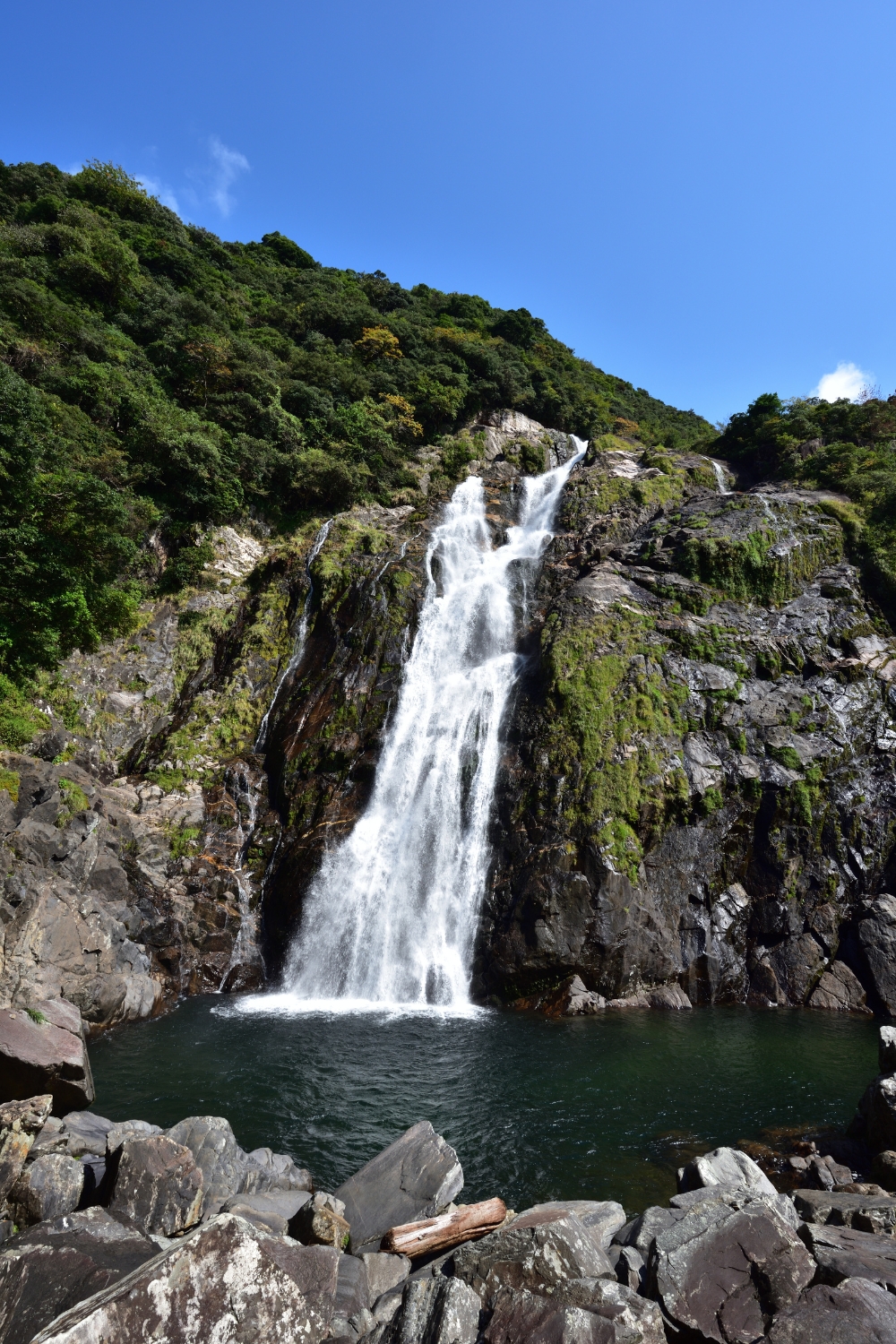
Oko Falls, hidden deep within Yakushima’s mountainous interior, rewards adventurous hikers with one of Japan’s most spectacular waterfalls. The 88-meter cascade plunges through pristine forest, creating a natural amphitheater where visitors can experience the raw power of Yakushima’s mountain waters.
Remote Natural Amphitheater
The waterfall drops 88 meters in a single spectacular plunge, creating a natural amphitheater surrounded by towering cliffs and ancient forest. The spray from the falls creates a cooling microclimate that supports unique plant communities and provides relief from Yakushima’s humid climate.
The granite cliff faces around Oko Falls showcase the geological forces that shaped Yakushima, with distinctive rock formations and mineral deposits visible in the cliff walls. The pristine pool at the base offers swimming opportunities for those willing to brave the cold mountain water.
Challenging but Rewarding Trek
The hike to Oko Falls requires 3-4 hours round trip through varied terrain, including river crossings and steep forest paths. The trail difficulty keeps crowds away, ensuring a more pristine and peaceful experience for dedicated hikers.
Weather conditions significantly affect trail accessibility, with heavy rains making river crossings dangerous. The trail requires proper hiking equipment and experience with wilderness navigation.
Height: 88 meters
Hiking time: 3-4 hours round trip
Difficulty: Moderate to challenging
Crowd level: Low due to trail difficulty
5. Nagata Beach – Sea Turtle Nesting Paradise

Nagata Beach stretches along Yakushima’s northwestern coast, offering pristine white sand and clear blue waters that serve as one of Japan’s most important sea turtle nesting sites. This protected beach combines natural beauty with incredible wildlife viewing opportunities during turtle nesting season.
Sea Turtle Conservation Area
From May to September, loggerhead sea turtles return to Nagata Beach to lay their eggs in the warm sand. This natural spectacle attracts wildlife enthusiasts from around the world, offering rare opportunities to witness these ancient mariners in their natural habitat.
The beach operates under strict conservation guidelines during nesting season, with guided tours providing educational experiences while protecting the turtles. Visitors can observe nesting behavior, learn about sea turtle biology, and participate in conservation efforts.
Pristine Coastal Environment
Beyond its importance for sea turtle conservation, Nagata Beach offers some of Yakushima’s most beautiful coastal scenery. The contrast between the pristine white sand, clear blue waters, and the lush forest that extends nearly to the water’s edge creates a tropical paradise atmosphere.
The beach provides excellent swimming and snorkeling opportunities, with clear waters revealing diverse marine life. The surrounding area includes coastal hiking trails and observation points for sunset viewing.
Sea turtle season: May-September
Activities: Turtle watching, swimming, snorkeling
Conservation: Guided tours required during nesting season
Beach length: 1 kilometer
6. Yakusugi Museum – Cultural and Natural History
The Yakusugi Museum provides essential context for understanding Yakushima’s natural and cultural heritage. This modern facility showcases the island’s unique ecosystem, the relationship between humans and ancient forests, and the conservation efforts that protect this UNESCO World Heritage site.
Ancient Forest Education
The museum features extensive exhibits about Yakushima’s ancient cedar forests, including detailed information about the island’s most famous trees. Interactive displays explain the unique growing conditions that allow cedars to reach such incredible ages and sizes.
Visitors can learn about the difference between yakusugi (cedars over 1,000 years old) and kosugi (younger cedars), understanding how Yakushima’s wet climate and mineral-rich soil create perfect conditions for these forest giants. The museum also explains the role of typhoons and natural disasters in shaping the forest ecosystem.
Cultural Heritage and Conservation
The museum explores the relationship between Yakushima’s residents and the ancient forests, from traditional uses of cedar wood to modern conservation efforts. Exhibits detail the island’s logging history and the transition to environmental protection that led to UNESCO World Heritage designation.
Documentary films and photography exhibitions showcase the island’s biodiversity and the ongoing scientific research that helps protect these unique ecosystems. The museum serves as an excellent introduction before exploring the forests themselves.
Focus: Natural and cultural history
Highlights: Ancient cedar exhibits, conservation stories
Duration: 1-2 hours
Best timing: Before forest hiking
7. Hirauchi Kaichu Onsen – Ocean-Side Hot Springs
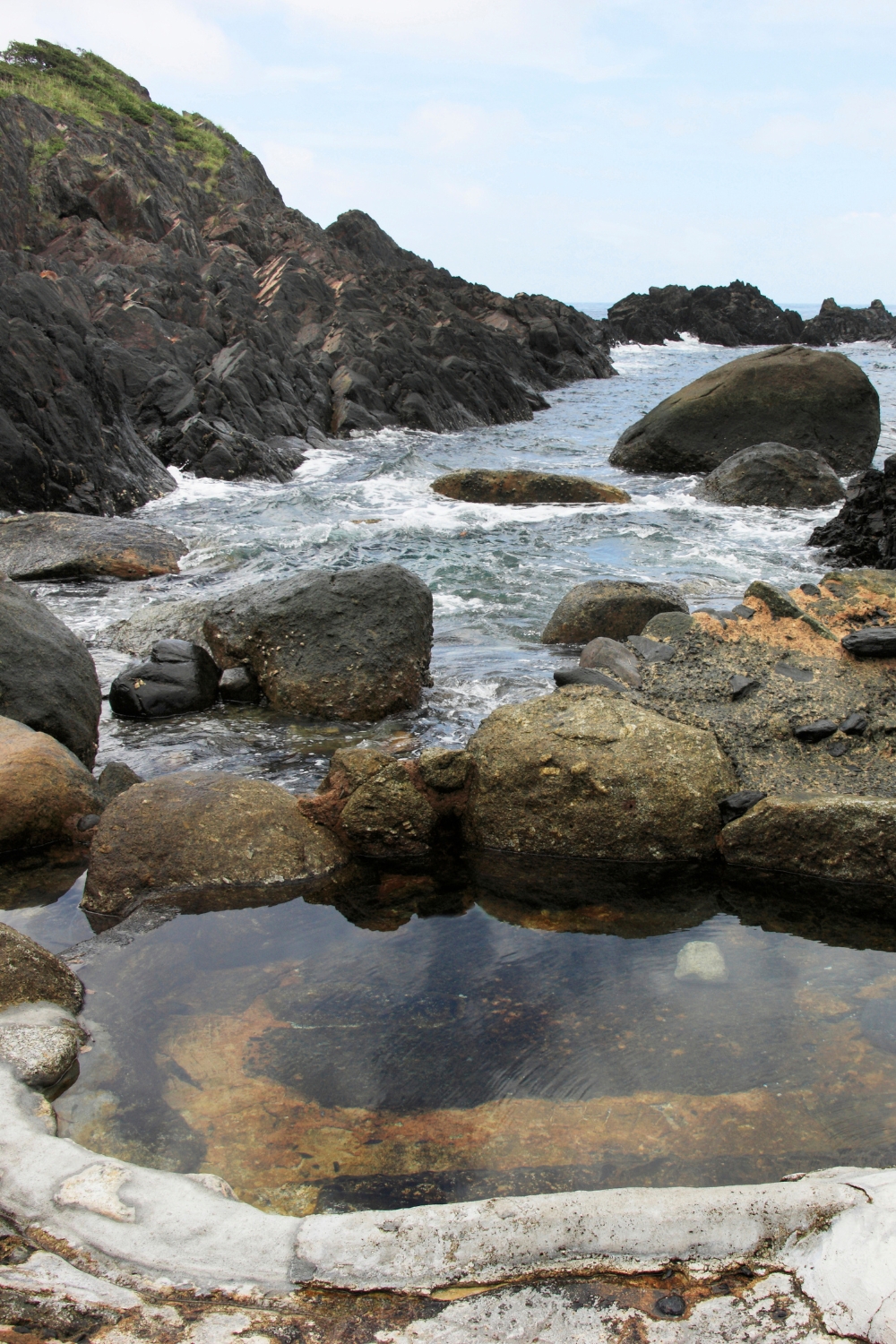
Hirauchi Kaichu Onsen offers one of Japan’s most unique hot spring experiences, where natural thermal waters flow directly into tidal pools carved from coastal rocks. This extraordinary onsen is accessible only at low tide, creating a magical bathing experience where hot spring waters mix with ocean waves.
Tidal Pool Hot Springs
The hot springs emerge from coastal rocks, creating natural bathing pools that fill with mineral-rich thermal water. During low tide, bathers can enjoy the warm waters while listening to ocean waves and watching the horizon. At high tide, the pools completely disappear under seawater.
The experience combines the therapeutic benefits of natural hot springs with the dramatic beauty of Yakushima’s rugged coastline. The mineral-rich waters, heated by geothermal activity, offer relaxation after long days of hiking through the island’s mountain forests.
Timing and Natural Conditions
Access to Hirauchi Kaichu Onsen depends entirely on tidal conditions, with bathing possible only during the few hours around low tide. Visitors must check tide schedules and plan their visit accordingly, adding an element of natural timing to the experience.
The facilities are completely natural, with no artificial structures or amenities. This primitive setting enhances the connection with nature but requires visitors to come prepared with towels and appropriate clothing.
Access: Low tide only
Facilities: Natural pools, no amenities
Experience: Unique ocean-side bathing
Planning: Check tide schedules essential
8. Yakusugi Land – Ancient Forest Sanctuary
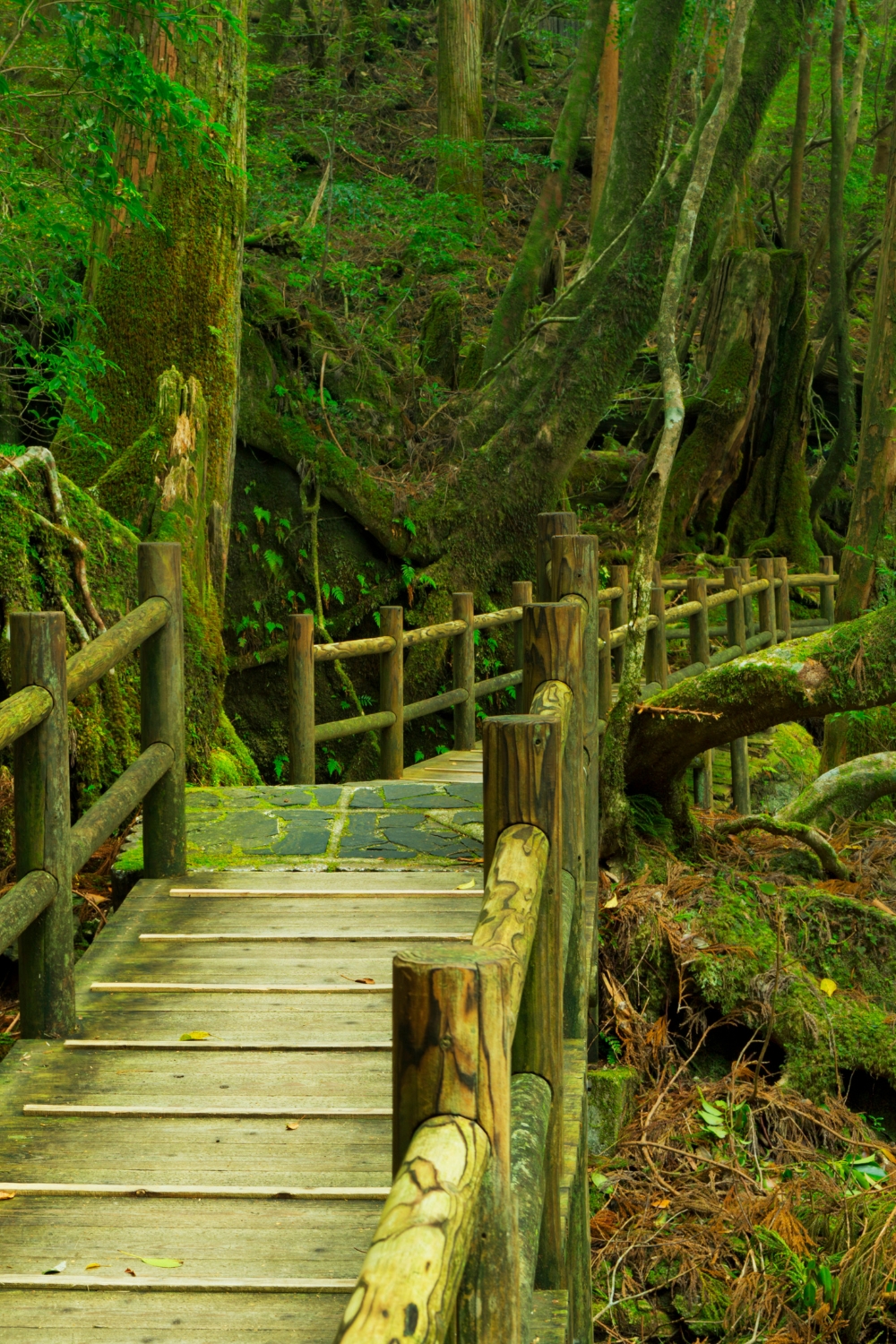
Yakusugi Land provides the most accessible opportunity to experience Yakushima’s ancient cedar forests, offering multiple hiking trails through primeval woodland without the extreme physical demands of the Jomon Sugi trek. This protected area showcases the island’s most impressive trees while accommodating visitors of varying fitness levels.
Multiple Trail Options
Four different trails range from 30 minutes to 4 hours, allowing visitors to choose experiences matching their time and energy. The shortest trail leads to impressive ancient cedars, while longer options explore deeper forest areas and provide more challenging hiking experiences.
The 150-minute course leads to the famous “Buddha Cedar” and “Mother Cedar,” two of Yakushima’s most photogenic ancient trees. These massive cedars demonstrate the incredible diversity of tree shapes and sizes that make Yakushima’s forests so remarkable.
Ancient Cedar Encounters
Yakusugi Land houses numerous named cedars, each with distinctive characteristics and estimated ages ranging from 1,000 to 3,000 years. The well-maintained trails include information boards explaining the unique features of individual trees and the forest ecosystem.
The forest environment changes dramatically with elevation, from dense subtropical vegetation at lower levels to more open highland forest near the trail’s highest points. This diversity allows visitors to experience multiple ecosystems within a single hiking experience.
Trail options: 30 minutes to 4 hours
Difficulty: Easy to moderate
Famous trees: Buddha Cedar, Mother Cedar
Facilities: Parking, restrooms, information center
9. Anbo River – Crystal Clear Mountain Waters

The Anbo River system creates some of Yakushima’s most pristine freshwater environments, with crystal-clear mountain streams flowing through ancient forests before reaching the ocean. These waters offer excellent opportunities for river activities, wildlife observation, and experiencing the island’s incredible water quality.
Mountain Stream Ecosystem
The river’s exceptional clarity results from Yakushima’s pristine mountain watershed, where ancient forests filter rainwater naturally. The granite bedrock creates natural pools and cascades perfect for swimming, while the clean water supports diverse aquatic life including rare fish species.
Several tributary streams create secluded swimming holes and natural bathing areas throughout the river system. The water remains refreshingly cool even during summer, providing relief from Yakushima’s humid climate.
River Activities and Exploration
The Anbo River offers opportunities for swimming, fishing, and peaceful riverside hiking. Several access points along the river provide different experiences, from shallow family-friendly areas to deeper pools suitable for more adventurous activities.
The river’s pristine condition makes it perfect for photography, with crystal-clear waters revealing underwater rock formations and aquatic life. The surrounding forest provides shade and creates a peaceful atmosphere for relaxation.
Water quality: Exceptionally clear
Activities: Swimming, fishing, photography
Access: Multiple points along river
Temperature: Cool and refreshing year-round
10. Miyanoura Village – Island Culture and Gateway
Miyanoura Village serves as Yakushima’s main port and cultural center, offering visitors insight into island life and providing essential services for exploring the island’s natural attractions. This charming fishing village combines traditional Japanese culture with modern amenities needed for wilderness adventures.
Traditional Island Life
The village showcases traditional Yakushima architecture and lifestyle, with fishing boats in the harbor and local shops selling island specialties. Visitors can experience authentic island culture, from local restaurants serving fresh seafood to traditional crafts made from yakusugi cedar wood.
The morning fish market provides insight into the island’s maritime culture, where local fishermen sell their daily catch. Traditional festivals and community events offer opportunities to interact with local residents and learn about island customs.
Gateway to Island Adventures
Miyanoura serves as the primary entry point for most visitors, with ferry connections to mainland Japan and essential services including accommodation, restaurants, and equipment rental. The village provides the practical base for exploring Yakushima’s wilderness areas.
Local guides and tour operators based in Miyanoura offer expertise for hiking, wildlife viewing, and cultural experiences. The village’s restaurants specialize in local cuisine, including fresh seafood and dishes featuring local ingredients.
Role: Main port and service center
Cultural attractions: Fish market, traditional architecture
Services: Accommodation, restaurants, guides
Transportation: Ferry connections to mainland
Planning Your Yakushima Adventure
Getting to the Island
Yakushima is accessible by ferry from Kagoshima or by small aircraft to Yakushima Airport. The ferry journey takes 2-4 hours depending on the service, while flights take just 35 minutes. Ferry travel offers scenic views of the surrounding islands and ocean.
Most visitors arrive via Miyanoura port, where rental car services and local transportation help access the island’s attractions. Advance booking is recommended, especially during peak seasons.
Best Time to Visit
Spring (March-May): Mild temperatures and blooming flowers make this ideal for hiking. Cherry blossoms bloom earlier than mainland Japan due to the warmer climate.
Summer (June-August): Peak tourist season with warm temperatures perfect for beach activities and swimming. This is also sea turtle nesting season at Nagata Beach.
Fall (September-November): Excellent weather for hiking with fewer crowds. Fall colors in the mountains create spectacular scenery.
Winter (December-February): Cooler temperatures and occasional snow on mountains. Some trails may be more challenging, but the island offers a different character with fewer tourists.
Essential Preparations
Yakushima receives heavy rainfall throughout the year, earning the local saying “35 days of rain each month.” Waterproof clothing and equipment are essential for any outdoor activities.
Hiking boots, rain gear, and warm clothing are necessary even for shorter trails due to rapidly changing weather conditions. The island’s humidity requires quick-drying clothing and good ventilation.
Many trails require permits or have seasonal restrictions, especially during sea turtle nesting season. Check current conditions and regulations before visiting specific attractions.
Conclusion
Yakushima Island offers an extraordinary journey into Japan’s most pristine wilderness, where ancient forests, pristine waters, and unique wildlife create experiences impossible to find elsewhere. From the spiritual pilgrimage to Jomon Sugi to the magical atmosphere of the Princess Mononoke forest, each destination reveals different aspects of this remarkable island.
The island’s greatest strength lies in its incredible biodiversity compressed into a small area, allowing visitors to experience everything from subtropical beaches to alpine forests within a single day. Whether you’re seeking adventure, spiritual connection, or simply escape into nature, Yakushima delivers experiences that will remain with you long after leaving the island.
These ten destinations represent the essential Yakushima experience, but the island rewards deeper exploration with hidden waterfalls, secret hot springs, and pristine forests that few visitors ever see. The combination of accessibility and wilderness, ancient history and living ecosystems, makes Yakushima a truly unique destination.
Plan your visit carefully, respect the natural environment, and prepare for an adventure that showcases the very best of Japan’s natural heritage. Yakushima awaits with its ancient forests, crystal-clear waters, and the promise of experiences that connect you directly with the natural world.
